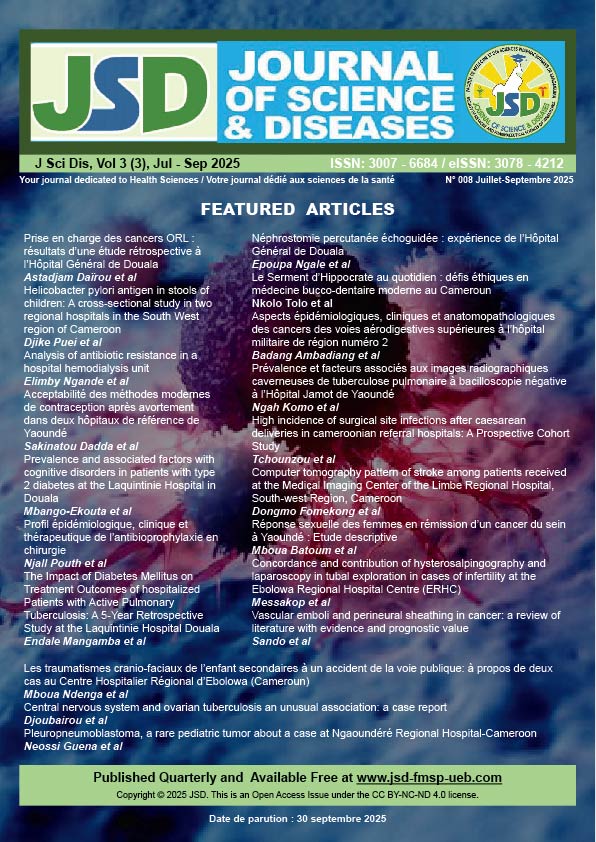Analysis of antibiotic resistance in a hospital hemodialysis unit
DOI:
https://doi.org/10.64294/jsd.v3i3.128Keywords:
Hemodialysis, Multidrug-resistant bacteria (MDROs), Microbiological surveillance, AntibioticsAbstract
Background: Bacterial infections represent a major cause of complications in hemodialysis patients due to their likely immunosuppressed state. The growing emergence of multidrug-resistant bacteria worsens the situation and limits therapeutic options, thereby increasing morbidity and mortality in this population. The aim of this study was to analyze the antibiotic resistance profile of bacteria isolated in the hemodialysis unit of Douala General Hospital (HGD).
Methods: We conducted a descriptive cross-sectional study over a four-month period, during which 411 samples were collected from patients and service surfaces. Antibiotic susceptibility was assessed using agar-based antibiograms. Data were analyzed using R software.
Results: The prevalence of multidrug-resistant bacteria was 45%. Among these bacteria, 59.4% of Staphylococcus aureus strains were methicillin-resistant (MRSA), and 89.7% of Enterobacteriaceae produced extended-spectrum beta-lactamases (ESBLs). High resistance rates were observed for aminoglycosides (44.4%), quinolones (36.1%), and macrolides (12.9%). All Pseudomonas aeruginosa strains were resistant to ceftazidime.
Conclusion: The high levels of bacterial resistance observed highlight the need to strengthen infection prevention measures, optimize antibiotic use, and implement strict microbiological surveillance to limit the spread of multidrug-resistant organisms (MDROs) in hemodialysis units.



